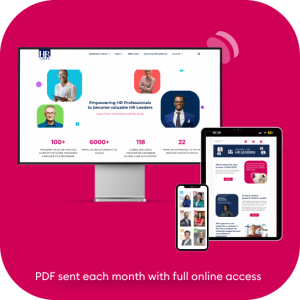There’s no denying that the way we work is changing. The evolution of technology is creating new roles and removing others, while the COVID-19 pandemic catalyzed a drastic increase in work-from-home setups. But what about the rise of the gig economy?
With between 20-30% of Europe and the US undertaking at least one form of independent work—and an even higher percentage across Africa and Asia – freelancing has become a part of almost every global industry.
For HR professionals, though, this can be a bit of a challenge. Balancing full-time employees with in-and-out freelancers is always going to be somewhat of a balancing act, and it’s smart to learn how to manage a hybrid team if you want to stay ahead.
What is ‘Gig Economy’?
The gig economy refers to the many people who are switching to self-employment and freelancing rather than full-time employment. It also includes those who are employed but who do extra independent work on the side – known commonly as a side hustle.
In short, this economy is all about a growing number of people independently carrying out jobs with or without a contract. When it comes to gig economy examples, a business may work with a self-employed photographer to create the imagery for their website rather than teaming up with an entire photography business.
Or, they might hire a remote freelance writer to create the written content for their blog, working on a long-term basis but without any formal employment. They don’t pay a set wage, but instead usually pay per job or per hour, with no requirement for sick pay or holiday and the agreement that the freelancer can work for other businesses at the same time.
Technology in the Gig Economy
Tech has played a huge role in the rise of the gig economy, but what types of technology have helped the gig economy to grow? From video call software like Zoom to cloud-based file-sharing solutions like Google Docs, there’s a wealth of tools out there that make working independently a breeze.
Technology has made it easier to outsource work to specialist agencies, too. Take KAU Media Group (KMG), for example. As a performance marketing agency, they work with you to manage your search rankings, lead generation, and conversions remotely. You can avoid hiring in-house staff while still benefiting from the knowledge of experts for as long as you need them. It’s marketing on demand.
How to Manage Workers in the Gig Economy
In previous years, freelancers were often kept at arm’s length in organisations, operating independently of the rest of the company. As the gig economy grows, though, we’re seeing an increasing number of blended workplaces with freelancers and employees tackling projects side-by-side.
As an HR professional, this can make things a little tricky. What rules apply to freelancers that don’t to your employees? If you’re not sure where to start, we’ve put together our top tips for managing workers in the gig economy with ease.
Open Up a Line of Communication
When a new freelancer joins your team, the first thing you should do is open up a line of communication. It’s important they know that you’re the person to go to if they have any problems with business employees or need any extras from the company. Start with a friendly introduction of yourself and the HR department before letting them know the channels they can reach you on and what sort of things they might come to you for.
Understand Different Demands
Freelancers come and go, with some working remotely and never stepping inside your business at all. In your HR role, this poses the problem of keeping them happy when you’re not given the chance to get to know them.
The solution? Ask them. It’s as simple as that! Get to know what they expect from your side of the business, including how they usually communicate with the teams they work with and whether they want to join in with staff events, like wellbeing groups. Learn how you can make their experience with your business better and if there’s anything you can do to make their tasks easier.
Be Clear on Company Policy
Just because you’re managing a freelancer doesn’t mean they can ignore your company policies. To help them blend with your team and suit your culture, be sure to teach them your do’s and don’ts. This might include your zero tolerance for bullying or the fact that you encourage innovation, as well as your core values that shape the work you do, like a focus on sustainability.
Set Them Up With the Right Tools
Freelancers often have their own suite of tech they use, but it’s important you add them to yours, too, for cohesive collaboration. If you use Slack for project chats, for example, you’ll want to invite them to join your group and offer help to set up their profile. You might also need to send them an invite to join the cloud software that you use to create and share documents, ensuring their work doesn’t have to be shifted to a different format in order to view it.
Don’t Micromanage
Self-employed individuals work for themselves for a reason, and it’s important to remember that as you manage them. They don’t want someone peering over their shoulder or constantly chasing the work. They want to be left alone to get on with the job they’re capable of doing independently and be trusted to do it properly. You’ll also be less able to manage their time (unless that’s stipulated in the contract) and if your freelancer doesn’t respond to emails out of hours or finishes early on a Friday, that’s up to them.
Consider Legalities
Just because a freelancer isn’t under your watch doesn’t mean you can’t get in legal trouble. Consider data security and negligence issues when a gig worker has access to client information, as well as your responsibility for their health and safety on-site.
It’s also important to remember that treating your freelancers too much like employees could lead to legal issues. If the law recognizes your gig workers as traditional employees, you might be required to give them the perks of employment, too, like pension funds and insurance.
Dealing With Employee Resentment
In some workplaces, you might see your full-time employees become resentful of the freedom your freelancers have. When a member of their project can come and go as they please, you may start to hear grumbles from your staff. If this happens, acknowledge that the freelancer can work the hours they choose as long as the work is done, but also that they lack job security, pension funds, and insurance.
It’s also important to listen to the complaints of your team. If they’re frustrated that the gig worker can leave earlier, consider setting up flexible work hours that allow your team to do the same, or a hybrid work solution so that they can finish up their day by working from home.
Final Thoughts
The rise of the gig economy has certainly led to the need for change in traditional workplaces. Hopefully, our tips have given you some clarity on how you can balance your blended team and create the foundations for a solid, collaborative workforce.
To keep up with more HR-related news, be sure to join the HR Future community.
Guest Writer


















